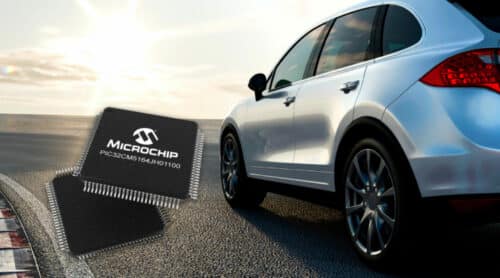Manufacturers of electronic systems ranging from vehicles to home appliances are moving towards automating and connecting end applications, spurring the need for industry standards related to functional safety and cybersecurity protection to ensure their products operate safely and securely. To provide manufacturers with an MCU solution equipped with components that meet ISO 26262 functional safety and ISO/SAE 21434 cybersecurity engineering standards, Microchip Technology Inc. This is the industry’s first MCU-based on the Arm® Cortex®-M0+ architecture with AUTOSAR support, Memory-Built-In Self-Test (MBIST) and secure boot.
The PIC32CM JH is compatible with AUTOSAR, an open software architecture, providing suppliers with the ability to change to lower-level hardware but keep the original application code, making it easier to migrate between different designs. AUTOSAR-ready is designed to streamline the development process and reduce overall costs. When using AUTOSAR, Microchip offers ASIL B microcontroller abstraction layers (MCALs) for functional safety applications — providing the lower-level hardware interface to the MCU.
Automotive industry OEMs require both functional safety and cybersecurity protection for many in-vehicle applications including touch buttons and touch wheels, door controls and console controls, and body applications such as Advanced Driver Assistance Systems (ADAS). The PIC32CM JH, when paired with one of Microchip’s Trust Anchor TA100 CryptoAutomotive™ security ICs, is compliant to ISO/SAE 21434, the new Cybersecurity Standard for Automotive. The TA100 employs ultra-secure hardware-based cryptographic key storage and cryptographic countermeasures to eliminate potential backdoors linked to software weaknesses.
“With the PIC32CM JH MCU, Microchip is addressing the growing need for microcontroller solutions that are designed with functional safety and cybersecurity protection, which is particularly important in the automotive industry,” said Rod Drake vice president of Microchip Technology’s 32-bit MCU business unit. “OEMs and other manufacturers now have the option to use an entry-level Arm Cortex-M0+ based MCU to meet compliance requirements previously only available on higher-end MCUs.”

The secure boot is part of the hardware. It authenticates the code to make sure it is valid and prevents malicious code from being loaded onto the MCU. Other hardware features included on the PIC32CM JH MCU are Error Correction Code (ECC) with fault injection, loopbacks on the communications interfaces, system memory protection unit and MBIST, all of which are safety mechanisms used to meet ISO 26262, IEC 61508 and IEC 60730 standards.
MBIST is the industry-standard method of testing embedded memories and can quickly test the integrity of the Static Random-Access Memory (SRAM) to ensure it is functioning properly before the code is run to mitigate failures. To support developers with implementation, the PIC32CM JH comes with functional safety collateral such as a safety manual, Failure Modes Effects and Diagnostic Analysis (FMEDA) and diagnostic code targeting ISO 26262 ASIL B (Automotive Safety Integrity Level) safety levels.
Additionally, the PIC32CM JH includes advanced touch with Driven Shield Plus, providing noise and water-tolerant operability. This feature is necessary for home appliances and industrial and automotive applications where the touch must work in a variety of harsh environments.






